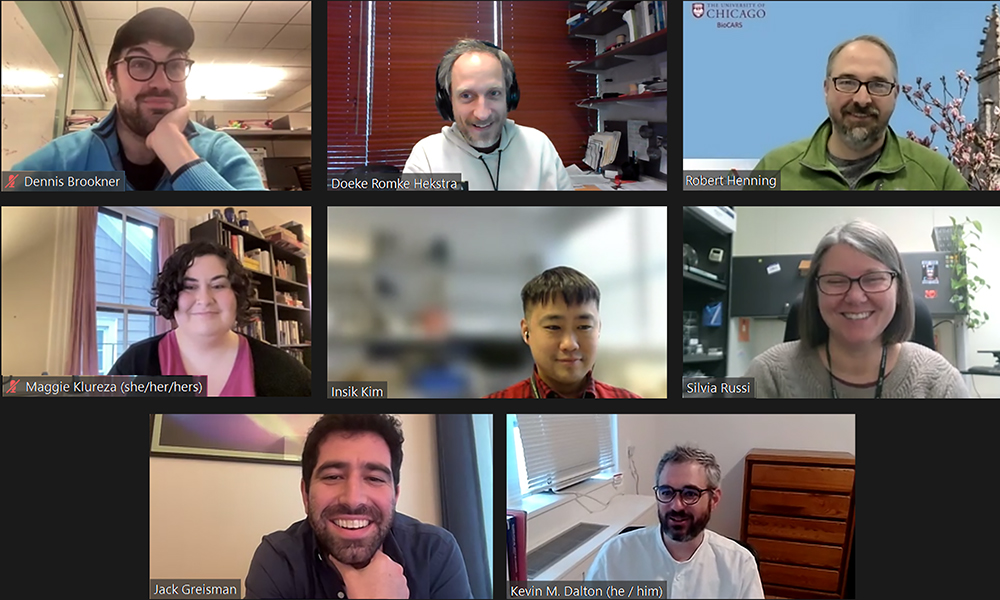It’s common to speak of “the structure of a protein,” but proteins are dynamic molecules that move and shapeshift. A protein can be described as 1-dimensional polymer – a chain of amino acids – that can fold into a defined 3-dimensional structure. But proteins do not adopt a single structure. They are small (often only a few nanometers in diameter) and exist in chaotic environments. Proteins are constantly wiggling– they may unfold, they may have parts that never adopt a defined structure, they may have chemical groups that flicker back and forth among a few states, like someone trying to get comfortable in a chair. This wiggling is what makes biology work – proteins can bind things, they can do things, they can respond to their environment. The Hekstra Lab tries to understand how the structures and wiggling of molecules enable their biological functions.
The wiggling of proteins is central to their function, but it is difficult to study because these motions are fast (nanoseconds) and often only span fractions of nanometers. The group developed “perturbative methods” to study how proteins move. That is, they changed the temperature, applied strong electric fields, and introduced subtly different chemicals into the protein active sites, and used X-rays to determine how the structure changes. These methods are like “spot-the-difference puzzles.” Your eyes may dart back and forth, trying to carefully compare the images, but what if you could just subtract them from one another? The areas that are unchanged disappear—they cancel out—and you are only left with where the images were changed. In our experiments, we compared all these different changes, and subtracted them from the original conditions – highlighting where the protein structures changed.
What did we learn? In a new paper published in PNAS, (PDF) we studied an enzyme called dihydrofolate reductase (DHFR). This enzyme is important for growing cells, because it plays an essential role in biochemical pathways that make nucleotides. The chemistry that DHFR performs in its active site requires two sequential steps, but these steps have conflicting requirements. If the enzyme were optimized to perform the first step, it would be much slower at the second step and vice versa. How, then, can this enzyme effectively speed up both steps? Using our spot-the-difference crystallography experiments, we characterize many ways that DHFR can move. Importantly, we show that some of these motions are correlated – if it wiggles over here a bit, it’s more likely to also wiggle over there a bit, etc. We then use computer simulations of how this protein moves at each of its different catalytic steps to show that it uses these correlated movements to switch structures. After the first chemical step, the enzyme’s active site rearranges to favor the second step. This logical progression of structures ensures that the protein’s active site is ready to perform the right task at the right time.
This research took place over several years and spanned the Hekstra Lab at Harvard, and beamlines at the Advanced Photon Source of Argonne National Lab and the Stanford synchrotron light source of SLAC National Accelerator LabAlthough we developed these spot-the-difference experiments to study a single enzyme, we think these methods will have broad applications to understanding other enzymes, and how their wiggling may affect, and be affected by, drug molecules, mutations, and changes in environments.
by Jack Greisman and Doeke Hekstra



